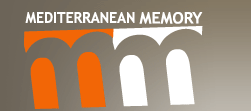The Jews in Mediterranean Islam [...]
Introduction
The Jews in Mediterranean Islam: memory seen through the prism of today (1950-2012)
The broadcasting archives kept by Mediterranean television companies about Judaism in Mediterranean Islam are contemporary with both the Israeli-Palestinian conflict and the major post-colonial migration that marked the end of the Jewish presence in the Arab-Muslim world. More than actually showing us, the archives give a glimpse of a vanished world which now exists only through the words of people who were there, historians and archive images.
How Judaism is shown in these films is intimately bound up with that context – which is why this article keeps rigorously to the chronological order of broadcast. The geographical and political origin of the television companies and their relationship with Judaism, or with Jewish-Muslim relations, also affects how the Jews are portrayed. Ideology alters how they are seen, as do the old stereotypes of the Jewish character current during the colonial period and the one that followed.
The first part, “The Statue of Salt”, presents films from 1952 to 1989. These are all films produced for French television when migration was at its height, a period finishing by and large in 1975. These films show the pain of separation and the eternal hope, only imaginable in the long term, of a return. But from the point of view of France which, with Israel and the Americas, was one of the most popular destinations, the direction of these post-colonial migrations is implicitly understood to be one-way. Like the fine novel by Albert Memmi, from which it takes its title, this section shows the transition from an old world to a modern one, where identities are likely to melt or be lost.
The second part, “Andalusia Continually Renewed” presents films related to the “1992 moment” – both a memorial of 1492 when the Muslims were driven out of Spain and, between the Madrid Conference and the Oslo Accords, the moment when the hope for peace in the Middle East turned people's minds back to this period of history in the hope of resurrecting and even surpassing it. This decade was also the golden age of the Andalusia myth, inaugurated by the Universal Exhibition of Seville. Reports made by Moroccan, Jordanian, Catalan and French television, give, each in their own way, their vision of history.
The third part, “Between Memory, Exile and Heritage”, presents archive films from 2004 to 2012. It is centred on questions of heritage, but behind then are discrepancies, conflicts of identity and politics. Moroccan, Jordanian and Palestinian television's way of looking at Judaism should be understood in the light of the failure of the “peace process” and of the subsequent political rivalries to be seen as the only true heirs of the golden age of the past.

Introduction
1. The Statue of Salt (1952-1989)
2. “Andalusias continually repe...
3. Between memory, exile and he...
Conclusion
Bibliography


Abstract
The Jews in Mediterranean Islam: memory seen through the prism of today (1950-2012) The broadcasting archives kept by Mediterranean television companies about Judaism in Mediterranean Islam are contemporary with both the Israeli-Palestinian conflict and the major post-colonial migration that marked the end of the Jewish presence in the Arab-Muslim world. More than actually showing us, the archives give a glimpse of a vanished world which now exists only through the words of people who were there, historians and archive images. ...
Author
Abecassis Frédéric
Lecturer in contemporary history, ENS of Lyon, LARHRA.





